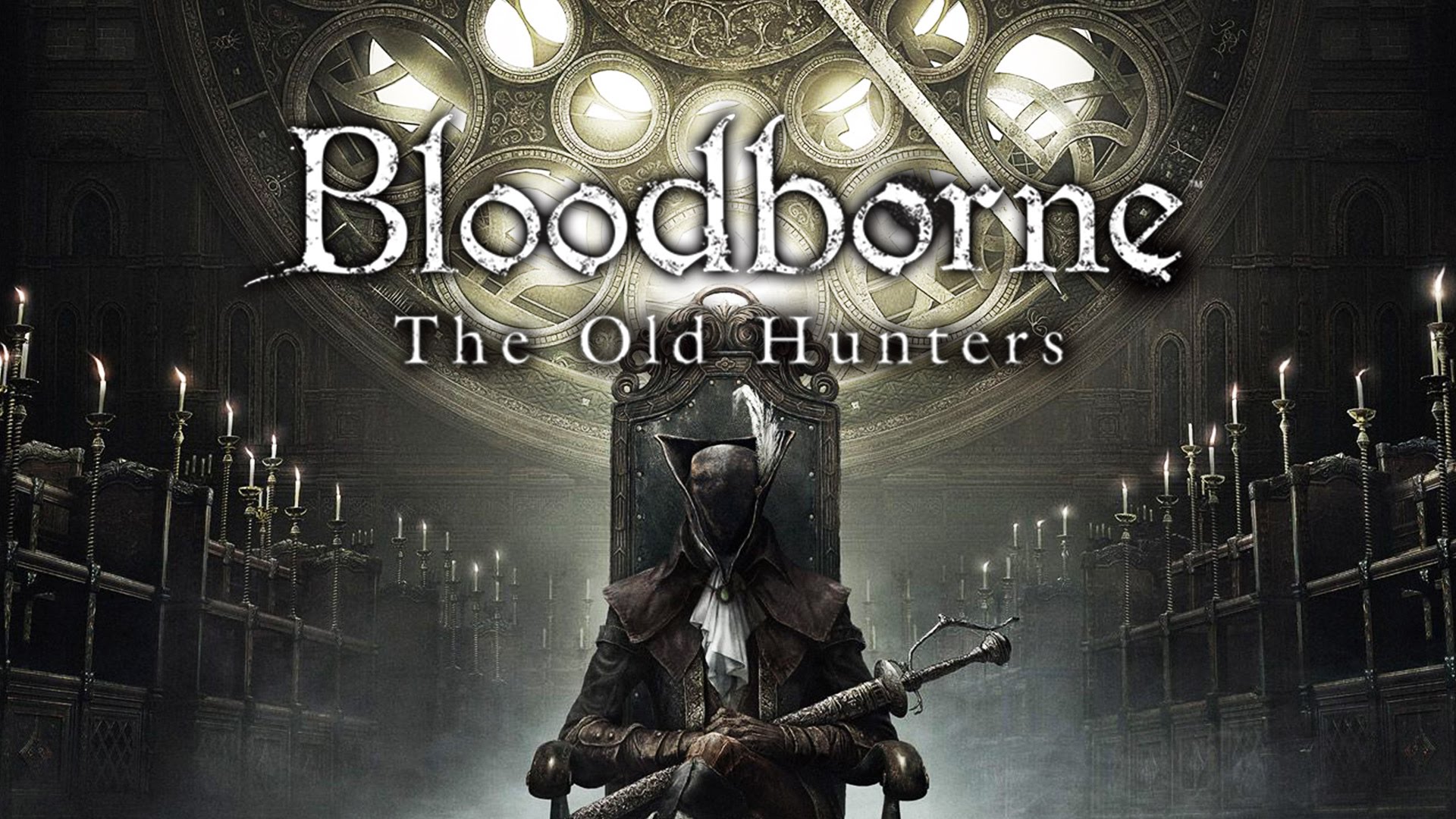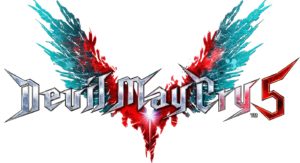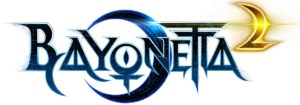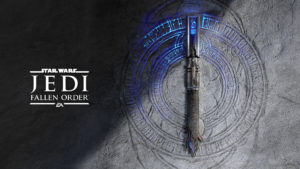
There will be blood.
One day my brother decided he wanted to use my computer to play games. At that point I had already given up on Dark Souls and decided to hone my skills in this game. I went out and bought the disc and borrowed a PS4 from a friend of mine. This was actually the game I intended to play last, because apparently it ranks highest in terms of speed. The natural progression would be to play through the 3 Dark Souls and then this one, each game being quicker than the last. I needed some sort of Dragonball training, so I ended up playing this one. There’s far less nuance to this one and in a way it’s more streamlined, but it’s still my favourite.
Outside influences convinced me that the game should still be played in order of slowest to fastest (movement, combat speed, not FPS). It’s true, after playing Bloodborne, Dark Souls was practically in slow motion. Due to the similarities between this game and others in the series, it’s really difficult to not reiterate the same points.
I thought Dark Souls hid a lot of content off to the sides, but that’s dwarfed by how much Bloodborne places off the beaten path. Most of the game is side content. Entire systems are unlocked via side content. It’s almost as if the developers know people go crazy exploring every nook and cranny of their worlds. Hell, even the True Ending boss is hidden waaaaaaaaaaay out there. I’m not sure if I would’ve figured it out if I wasn’t told.
Sony requires a Playstation Plus subscription to play online so sadly I missed a bunch of nonsense ‘Jump here’ messages next to cliffsides. Aside from messages the multiplayer system is also handled a bit differently. In each map stage there’s a woman ringing a bell that sort of ‘enables’ the invasion mechanic. Killing the lady disables invasion in that map. When I say ‘map’ it can be interpreted as ‘level’. Bit of a tangent here. To me, Map > Level > Stage/Arena in terms of size. You can think of fighting games as taking place in stages, pick whichever you want, really constrained and small. Levels are quite linear, usually in a certain order, and an objective in the end. In this way, one map could have multiple levels in it or even stages in those levels. In Dark Souls, there’s one gigantic map, and the player can cross the entire map without ever seeing a load screen. There are perhaps 4 exceptions to this. Separate maps that you have to see a loadscreen to get to, but there are some dead ends that must be teleported out of. This can’t be done in Bloodborne. It’s not totally physically linked. Yes, there is a really huge map and a lot levels are contained within that one map, but there are definitely a lot more loadscreens here than the other games. Honestly, this isn’t a big deal, I can’t even fathom how this would be a dealbreaker to some people. I suppose dying a lot would irritate some players seeing it so many times. Reading item descriptions can only entertain someone so much. Load times are near instant on the PC, so maybe we’re spoiled in that sense.
In that way, through Level Design and construction, we can mostly predict how the majority of the From Software games function. You start somewhere, proceed through a gauntlet of enemies until the end, which is a boss fight. Along the way you might unlock another checkpoint or open a secret passage that links back to the beginning, making it easier to reach the boss fight. You might consider that most games function this way, but most games are usually generous enough to give automatic checkpoints generously peppered throughout the level and again at the boss fight (even different stages during the boss fight). Throughout the level the game will aim to introduce one new enemey and there will be at least one jumpscare, maybe an enemy is hiding around the corner and attacks as you approach.
I feel like I learnt less playing through Bloodborne than Dark Souls due to the one and only fact that I played it second. The game’s tricks were already known to me. Complete with one map where the floor is poison, like Blighttown. Though the one in Bloodborne is far more interesting as you get there quite late in the game, and if you’ve explored sufficiently you will have a set of armour that reduces poison. In this way we can observe that Bloodborne has taken the feedback from the pain points of Dark Souls and somewhat “fixed” them. At least, given the Player the tools to overcome these annoyances.
The thing I did learn is how to fight properly. There is no shield in this game. Well, there is one, but its description discourages use. One of your only defensive moves is the parry, which is executed with the gun. Firing at an enemy during the buildup of their attack animation will put them in a “staggered” state that allows the Player character (Hunter) a special attack against them that does a huge chunk of damage. It’s even possible against bosses that are similar in size to the Hunter! The dodge move while locked on to an enemy is a short dash. We’re going to get a bit technical now. What the roll (dodge while unlocked) does is move the Hunter a set distance, as well as having some amount of iframes, invulnerability frames. When an enemy attacks, there are certain points in the animation where the hitbox around their attacking appendage turns on. If the Hunter‘s hurtbox collides with this active hitbox, the Hunter receives damage. Iframes turn off the Hunter’s hurtbox for the number of frames that they are active, effectively making the character invulnerable for those frames. Players might perceive that the roll has more iframes but that isn’t true. It merely has a larger translation than the dash, it moves the character more. Players do not have the habit of dodging through attacks, but that is actually what this game is trying to teach people. The animations are fast so that the hitbox isn’t active for a very long time. Ideally a Player would dash through all the attacks and still be close enough to weave in attacks of their own. This requires a great deal of confidence on the part of the Player. It is also quite unintuitive, because the Hunter is still physically there, no one expects the character to be invulnerable during that time. An expection to this is if the Player activates the Old Hunter Bone, which make the Hunter evaporate into smoke whenever a dodge is used, and while not actually increasing the number of iframes, gives confidence to the Player. Most games with a dodge have iframes during the dodge, though they might not explicitly teach the Player to dodge through attacks, it is an option that the Player has. For the most part, Players use dodges to translate away from danger, rather than through and therein lies the problem. Old Hunter Bone gives an interesting solution but unless a character has that innate somewhat magical quality, it doesn’t make much sense. Bayonetta has an interesting solution where the game educates the Player to press the dodge button when an attack comes close, when the dodge is successfully timed, the game slows down and the Player can notice that the attack is actually going through the character. Though Bayonetta is that kind of game (magical, action-based) and they have that luxury of having an explanation for a character going through attacks. With a lot of trial and error, a Player might learn about this invulnerability window, whether they choose to dive deeper and truly master it. If we take the case where a Player chooses to dodge away from an attack, that invulnerability window combined with the fast hitbox activation, a Player might just reasonably assume that the attack missed, which is perhaps good enough for the game. Maybe the player could start with a default dodge and unlock Old Hunter Bone‘s buff permanently somehow.
Another thing this game holds over the others is just how much style it has. I might have spent too many hours playing GunZ: The Duel when I was younger but my character wore a Van Helsing hat and a long coat the entire game. It never got old. Even each weapon and its animations look really stylish. The art direction on show is phenomenal. From the humanly architecture to the more gnarly areas, everything looks great. Except the forest map, that was sort of meh. Though it was interesting enough on its own, compared to the rest of the game, meh. A confession here, I get spooked somewhat easily, and I couldn’t play this game at night. It might have been due to the jump scares that inevitably exist in these sorts of games, but I just felt so terrified. There’s definitely a tangible atmosphere and tone that the game sets. The game is sort of like a haunted house, you might say.
As usual, there’s little explanation of what’s going on. There is a turning point in the game where everything just escalates. This transition is so jarring and severe that even if someone weren’t paying attention they’d think to themselves ‘What the fuck just happened?’ I knew that the game was going to do this and I still couldn’t help but go ‘This game is nuts’.
My goal at the beginning was to get my first Platinum Trophy from this game. To do that I’d have to go through the procedural RNG Chalice Dungeon feature. There’s actually a lot down there with unique weapons enemies and bosses but veterans of the series might perceive it as just a gimmick. I plan to get around to it eventually. I’m sure the level design and world construction takes up a lot of time and effort, this might have been From Software’s attempt at squeezing more content into the game for less effort. Some part of me thinks they implemented this to sort of ‘test the waters’ for future games whether in Bloodborne or Souls. The combat system has enough depth to afford these sorts of arena style encounters where the level really becomes just a stage. I’ll admit that I’m less about the interconnected world design and more into the mechanics and combat but there are a lot of people who do get into these games for the opposite reason. Unfortunately I haven’t had the chance to go through the dungeon so this might be updated when I eventually do.
This is one of those games that I think back and can’t really come up with any major flaws. Flaws that are in the game, like not enough basic weapons is something I can sympathise with though. I did find a weapon that I liked and stuck with the entire game. There is one weapon that scales off with a stat called Bloodtinge and only appears later in the game. Which is kind of weird, they could have put one a bit earlier so the player wouldn’t really waste the stat points. Bloodtinge also increases gun damage. But this is something they took into the extreme in the DLC which had a ton of new weapons. Here, having more starting weapons, such as those scaling off the more exotic stats would have helped build variety.
Bloodborne is easily one of my top few favourite games of all time. Definitely my favourite of From’s series of games. 2 kind of left a bad taste in my mouth and I really don’t see how 3 could exceed but I’ll definitely enjoy it.








